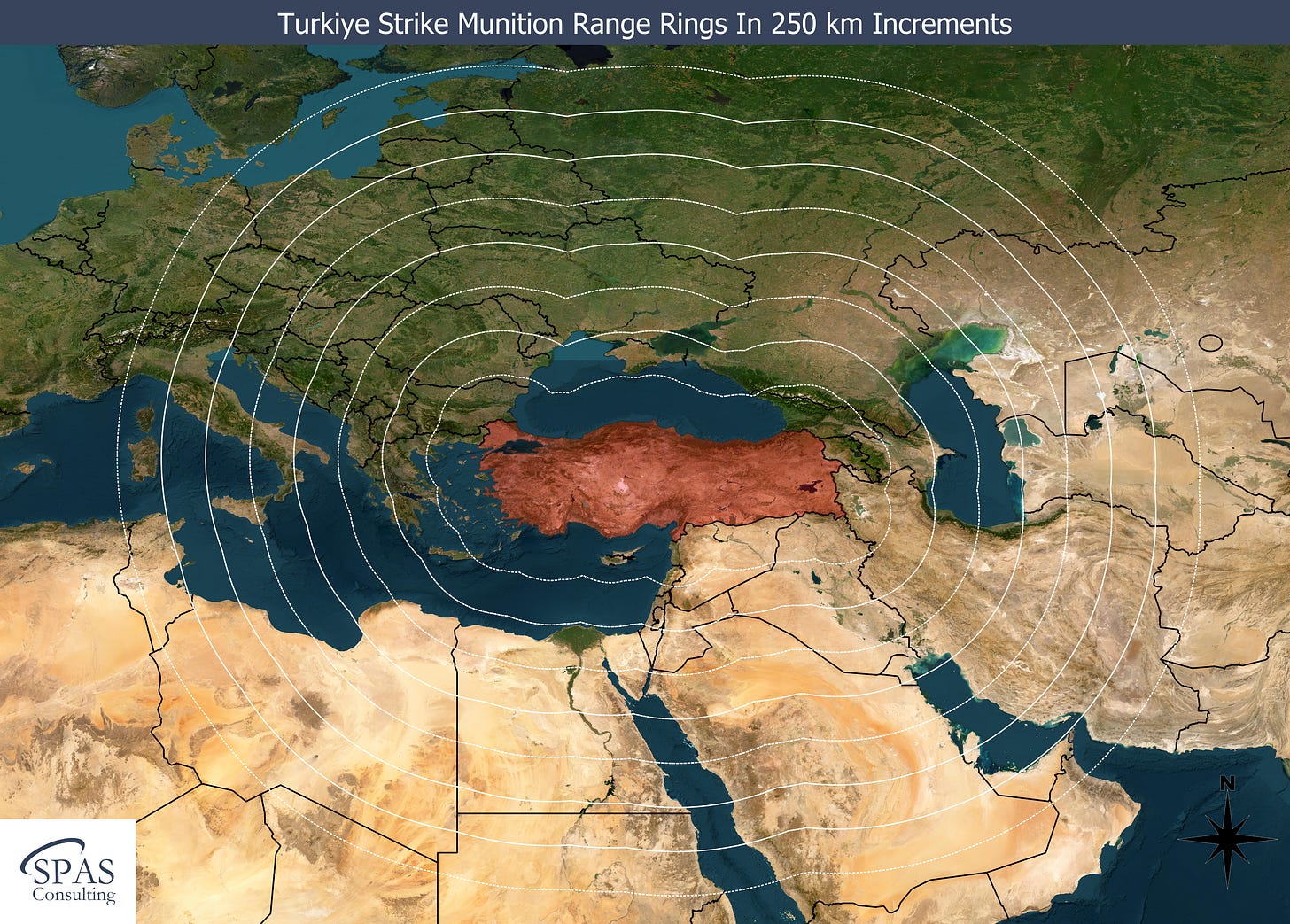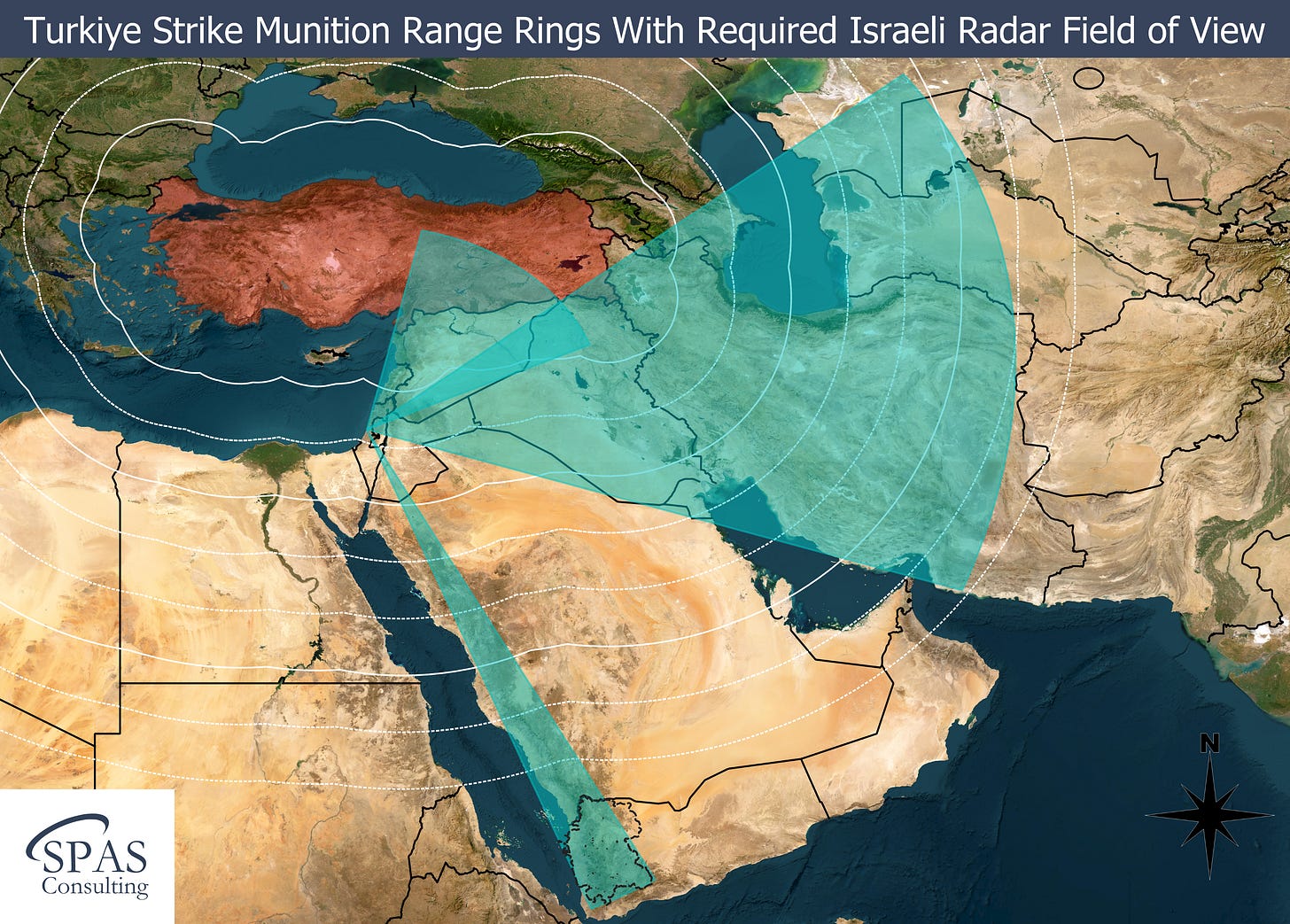Turkiye's Expanding Ballistic Missile Arsenal Complicates Israel's Ballistic Missile Defence Planning Amid Increasing Tensions
🇮🇱 🇹🇷
Note: The following text was originally posted on my X/Twitter account in a somewhat different form.
While Iran’s ballistic missiles regularly make headlines, Iran is hardly the only country in the Middle East to deploy ballistic missiles and several countries in the region are capable of manufacturing ballistic missiles. Included in this grouping is Turkiye, which is not only capable of designing and manufacturing conventionally-armed ballistic missiles but is also developing and seemingly deploying conventionally-armed ballistic missiles with a maximum range approaching 1000 kilometers while planning to ultimately deploy ballistic missiles with a maximum range of 2000 or more kilometers.
Most operators of conventionally-armed ballistic missiles tend to focus on designs with a maximum range of no more than 300-500 kilometers for various reasons. Turkiye has much grander ambitions and appears intent on developing a conventionally-armed ballistic missile force of unknown size that will, in purely qualitative terms, likely be akin to the arsenals of Iran’s Islamic Revolutionary Guard Corps Aerospace Force and the Chinese People’s Liberation Army Rocket Force. Although Turkiye’s development of ballistic missiles is hardly breaking news—we are simply witnessing the fruits of over thirty years of concerted investment and research and development activity—the expanding reach of Turkish ballistic missiles is likely to be a contributing factor to the collision course that Israel and Turkiye are currently on following recurring Israeli attacks on the Turkish-aligned new Syrian government in Damascus and in light of the restructuring of power dynamics in the region following the Iran-Israel War. During the Iran-Israel War, Turkish President Recep Tayyip Erdogan notably announced that his country would be accelerating its efforts to deploy medium- and long-range missiles.
Turkiye’s dynamic and fast-evolving military industry recently displayed its latest products at the biennial IDEF military industrial exhibition in Istanbul. One of the highlights at IDEF 2025 was the unveiling of Tayfun Block 4 ballistic missile. According to its manufacturer Roketsan, the Tayfun Block 4 weighs 7200 kg, has a length of 10 meters, and, importantly, has a diameter of 938 mm. The solid-fuelled Tayfun Block 4 is a large ballistic missile by any standard, and likely has a maximum range in the region of 750-1000 km.
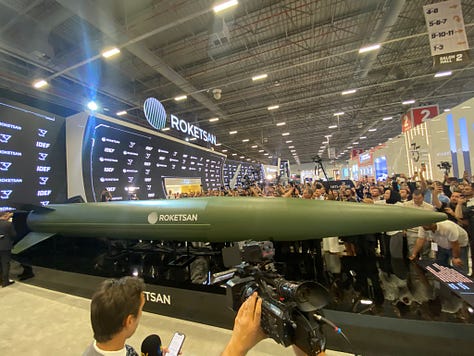
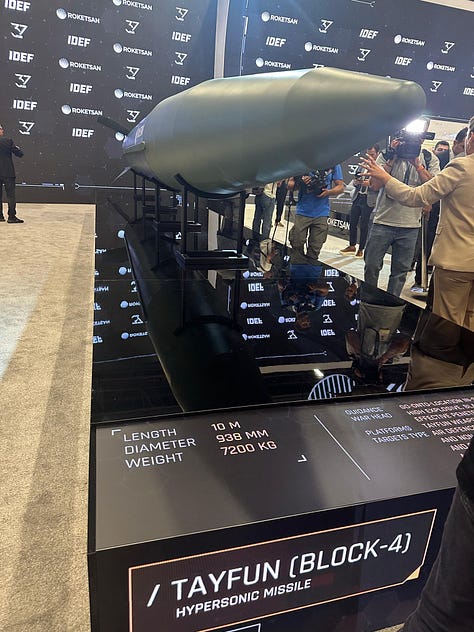
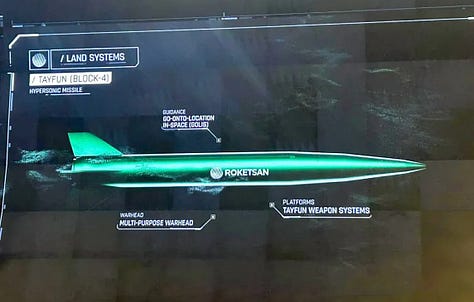
It is important to note that the Tayfun Block 4 is a much larger ballistic missile than the J-600T Yıldırım, a Turkish-made solid-fuelled 610 mm diameter ~2000 kg ballistic missile design of Chinese origin, as well as the newer 610 mm Bora/Khan ballistic missile.
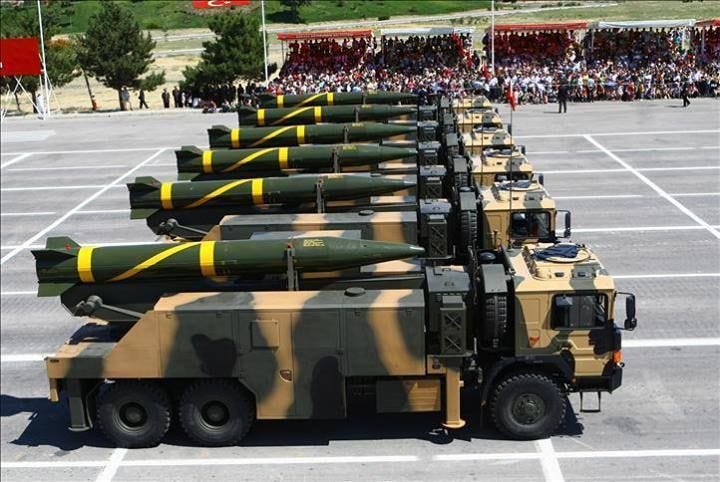
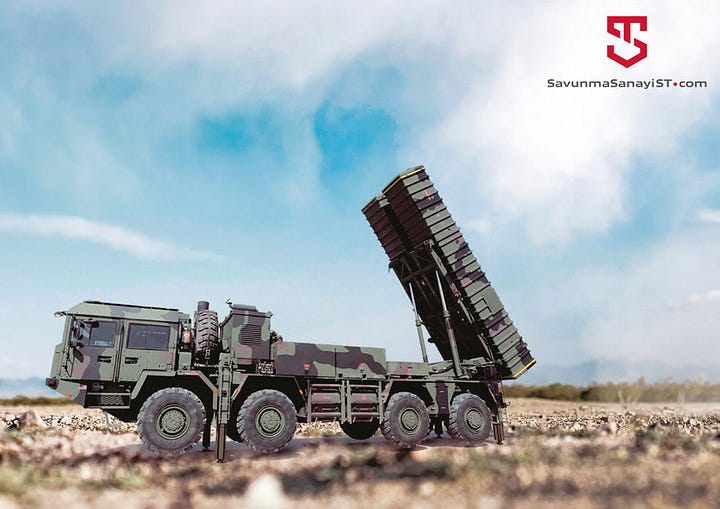
When it is deployed by the Turkish military and supposing that it has a maximum range in the region of 750-1000 km, the Tayfun Block 4 will allow Turkiye to readily target all of Israel, the western half of Iran, and much of southwestern Russia. Reports indicate that Turkiye is developing an even larger and longer-range ballistic missile called the Cenk, which appears to have a target maximum range of 2000 kilometers. Such a ballistic missile will allow Turkiye to, among other things, target Moscow.
Appreciating the implications of Turkiye’s development of a long-range conventionally-armed ballistic missile arsenal requires a holistic appraisal of Turkiye’s military-geographical context. Turkiye, a NATO member state, is not only in a complex neighbourhood, but it also has limited strategic depth on its north-south axis. The country’s peculiar geographic layout shapes the implications of the Tayfun Block 4 and prospective longer-range Turkish ballistic missile designs. Two particularly important points to consider are that Tel Aviv is just ~450-475 kilometers from Turkiye, and that a Turkish ballistic missile with a maximum range of just ~700-750 kilometers can reach the southernmost Israeli port city of Eilat. The following map features range rings in 250-kilometer increments.
A Turkish conventionally-armed long-range ballistic missile force is likely to complicate Israeli military planning, independent of the fact that Turkiye is a NATO member state. To appreciate why this is the case, it is important to recognize that all individual radar antennas have a field of view of no more than 120°. This includes the individual highly specialized radars that Israel uses to detect incoming ballistic missiles. Simply stated, Israel requires ballistic missile detection radars with different orientations to detect ballistic missiles launched from various countries.
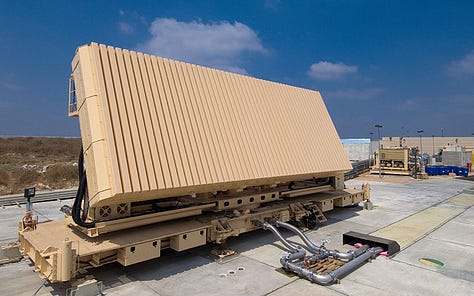
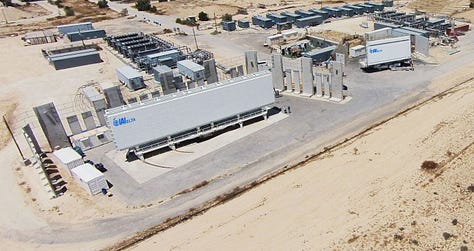
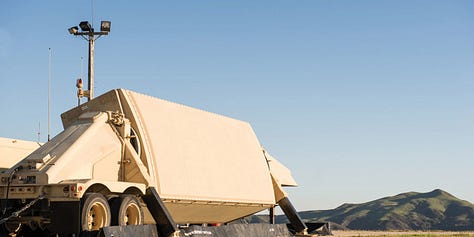
The following map features three wedges that illustrate the fields of view required from Israel’s network of ballistic missile detection radars to detect ballistic missiles that are respectively launched from Lebanon and Syria, Iran, and Ansarallah-controlled areas in Yemen. Note that the following map does not show the actual real-world coverage offered by Israel's various ballistic missile detection radars or the American AN/TPY-2 radar that is permanently forward-deployed in Israel (Turkiye is itself home to a permanently forward-deployed American AN/TPY-2 radar, which is understood to either directly or indirectly transmit sensor data on ballistic missiles launched by Iran to Israel). Should Turkiye deploy ballistic missiles in the western half of its territory, Israel will have to reorient its existing ballistic missile detection radars—or simply expand its network of such radars—to first detect and then—in very short order—intercept ballistic missiles approaching Israel from this new and previously unthreatened direction.
Although Turkiye's development of progressively longer-range ballistic missiles predates is hardly a new phenomenon driven by the recent Iran-Israel War, the war has nevertheless reshaped regional security dynamics and appears to have expedited the collision course that Israel and Turkiye were previously primed for.



